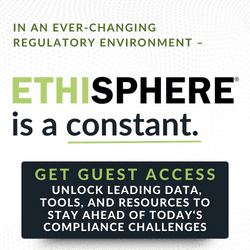As companies slowly start returning to work, it is time to re-emphasize risk management practices. LogicManager CEO Steven Minsky outlines several steps organizations can take now that will also prepare them for the potential of a second round of COVID-19 in the fall.
COVID-19 served as a wake-up call for many reasons. For businesses, we learned some hard lessons about our preparedness to sustain operations and manage risks during an event of this magnitude. The pandemic didn’t create the fractures that we’ve experienced, but it certainly amplified and accelerated them.
Risk assessments and business continuity procedures existed previous to its arrival and were easily attainable by any organization, they just weren’t prioritized. Now these tools have the attention of senior leadership and their importance is known and understood across the organization. We have a defined window of time to act – to evaluate the impact of the first wave and course correct before we are in the middle of a second, very likely more deadly wave in the fall.
The see-through economy guarantees that if we are careless about how we bring employees back to work and re-open physical locations, we will be publicly exposed for it. Those businesses and brands will suffer irreversible backlash, which will be compounded by an already challenging business environment. Now is not the time to be negligent with risk management. There is reason to believe the second wave could be much worse, particularly if we are not taking prudent measures now to act responsibly. There is a call to action for all of us to participate diligently and responsibly in our re-opening and return to work so that we collectively mitigate our contributions to this second wave.
Re-opening the economy at this juncture is fraught with concerns that will need to be factored into planning. We lack sufficient testing and tracking, which will collide with relaxed social distancing and increased mobility. Combine this with a return to work, usage of public transportation and children going back to school and other activities, and the spread is amplified.
Additionally, while most experts are predicting a second wave of some sort in the fall, none of their models have accounted for the collision with flu season. COVID-19 and the flu are different viruses. A healthy 20-year-old can catch the flu and have their lungs and immune system compromised, essentially giving them the underlying conditions that can make COVID so severe. Catching COVID on top of that vulnerability raises the risk profile of an exponentially larger portion of the population than in the first wave. This has the potential to leave much larger percentages of our employees, customers’ and vendors’ employees out sick simultaneously.
Companies need to consider all of this and how it specifically will come back to impact their organizations when designing their risk-based approach to re-opening, as well as developing business continuity plans (BCP) to prepare their workforce for a second wave. There are places to look for inspiration, such as factories that remained open and largely illness-free during the first wave due to strict protocols and sound risk management strategies. There were plenty of lessons learned that can be applied now, while there is time to control our course.
3 Key Actions to Minimize Risk in a Second Wave
- Conduct a Risk Assessment. Mobilize a cross-functional expert team to identify all vulnerabilities.
What happens if you’re facing 40 percent of your staff being out sick?
Where are your vendors and vendors’ vendors located, and which ones are critical to your BCP?
What new distancing strategies need to be implemented to ensure on-site protection?
Which procedures need to be implemented to minimize litigation risk should an employee fall ill at work?
Identifying and assessing risks to your organization from different root cause perspectives is the first step toward building a mitigation plan. - Perform Risk Mitigation. Organizations who were successful during the first wave implemented procedures like taking workers’ temperatures and oxygen levels and implementing distancing strategies and protocols that would prevent people from needing to use shared facilities at the same time. Identifying tasks that can be automated in an office environment is key to ensuring productivity if people do fall ill. Sixty percent of siloed business tasks are unnecessarily duplicative. Putting this strategy into motion now will ensure your organization is prepared for whatever comes in the fall or other business disruptions in the future.
- Adopt Risk-Based Incident Management. It is key to provide a channel for employees, vendors and partners to report on things like contact with someone who became ill, sickness numbers, concerns around following protocols and weaknesses in the supply chain before they become critical. This is a kind of risk-based mechanism to evaluate the effectiveness of mitigation and policy activities.



 Steven Minsky is the CEO of
Steven Minsky is the CEO of 








